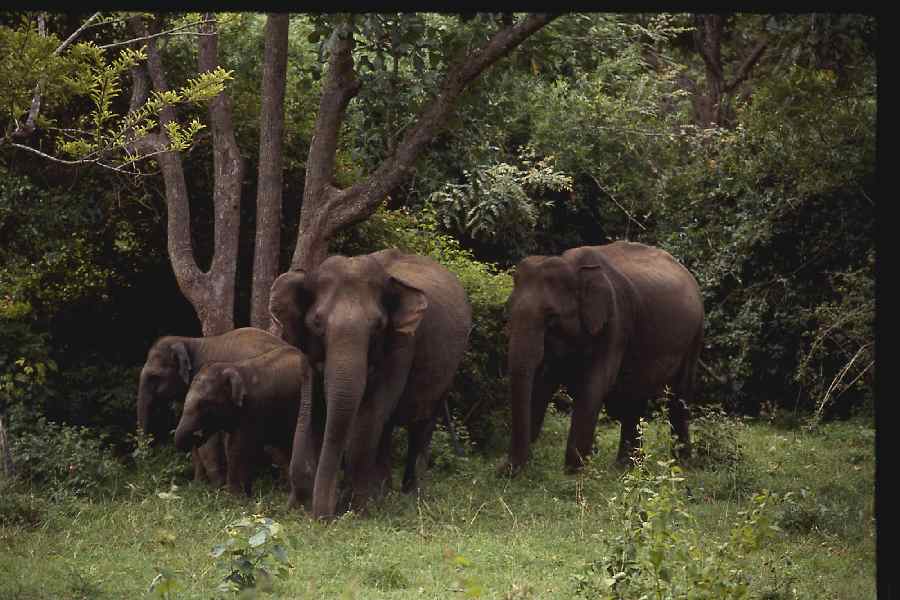India has five genetically distinct populations of wild elephants with worryingly low genetic diversity in the south, scientists have said, reconstructing for the first time the population history of Indian elephants over the past 100,000 years.
Their study of elephant genomes has revealed two populations in the north and three in the south with high genetic diversity and low inbreeding in the northern populations and the lowest genetic diversity and high inbreeding in the southernmost population.
High levels of inbreeding may lead to the accumulation of potentially harmful genetic mutations and a slow decline in populations, researchers at the National Centre for Biological Sciences (NCBS) and the Indian Institute of Science (IISc) in Bangalore who conducted the study have said.
“We wanted to understand the number of genetically distinct elephant populations, their history and potential challenges they face,” said Uma Ramakrishnan, a study team member at the NCBS engaged in research on the evolutionary history of mammals in the subcontinent.
Conservation scientists estimate India is home to 60 per cent of the population of Asian elephants. Their current populations in India are fragmented, surrounded by farmland, commercial plantations, human settlements and transport infrastructure such as highways and railway lines.
But the impact of population fragmentation on genetic diversity of elephants has been unclear because, scientists say, elephants have annual home ranges stretching across hundreds of square kilometres. This could, in principle, compensate for fragmentation and loss of genetic diversity.
The study by Ramakrishnan and her colleagues has now suggested that natural geographic barriers — the Ganga and the Brahmaputra in the north and mountain passes in the Western Ghats in the south — have likely contributed to the five distinct populations.
Their analysis has indicated that the northern elephant populations genetically diverged from the southern populations between 70,000 and 100,000 years ago, while the three southern populations diverged from each other between 20,000 and 30,000 years ago. Their study’s findings have just been published in the journal Current Biology.
With each migration from the north to south, the genetic diversity declined. Anubhab Khan, the study’s lead author now at the IISc, said this reduced genetic diversity points to what biologists call a founder effect. “Only a few individuals migrate to establish new populations,” Khan said.
As these populations become smaller, the risk of inbreeding increases and potentially harmful genetic variations are more likely to be inherited by the offspring due to breeding among related individuals.
The southernmost population, south of the Shencottah gap, a major mountain pass in the Western Ghats near Palghat region in Kerala, has the lowest genetic diversity and is the most vulnerable to the accumulation of potentially harmful mutations.
“With around 50 elephants, this population has a relatively high chance of extinction and needs to be prioritised for conservation efforts,” Ramakrishnan said.
The study’s other co-authors are Maitreya Sil, Tarsh Thekaekara, and Ishani Sinha at the NCBS, Rupsy Khurana and Raman Sukumar at IISc, and Kritika Garg at Ashoka University, Sonipat, Haryana.











